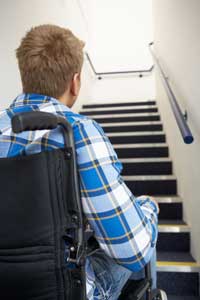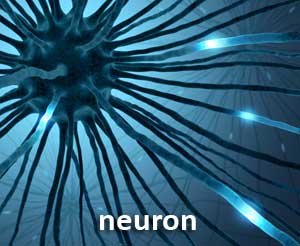 The health benefits of physical activity
include increased physical fitness (e.g., stamina, flexibility, muscular strength and endurance) and reduced risk for heart disease and stroke, breast and colon cancer, diabetes, hypertension and osteoporosis. In addition, exercise
reduces depression, improves sleep and enhances mood and overall quality of life.
The health benefits of physical activity
include increased physical fitness (e.g., stamina, flexibility, muscular strength and endurance) and reduced risk for heart disease and stroke, breast and colon cancer, diabetes, hypertension and osteoporosis. In addition, exercise
reduces depression, improves sleep and enhances mood and overall quality of life.
Too few Canadians (approximately 50%) get enough exercise to reap the full health benefits. However, even fewer adults with a chronic disability meet national recommendations for physical activity (38%). As well, a greater proportion of adults with chronic disabilities are physically inactive (26% vs. 13% for adults without disabilities).
While not everyone with a chronic disability can achieve recommended levels for physical activity, participation at lower levels has been shown to have noticeable physical, cognitive and emotional benefits.
 Inactivity may be a consequence
of:
Inactivity may be a consequence
of:
- Disabling conditions
- Physiologic decline
- Environmental barriers
Environmental barriers for individuals with chronic disabilities include:
- Lack of transportation to fitness centres
- Lack of information on accessible facilities and programs
- Lack of accessible exercise equipment and change rooms
- Inadequate space to move freely (e.g., narrow corridors and doorways)
- Fitness staff unfamiliar with the needs of individuals with disabilities
- The perception that fitness facilities are unfriendly environments for those with a disability
Such barriers can lead to a vicious circle of increasingly greater inactivity and deteriorating physical function, with an increased risk for development of secondary health conditions.
Barriers to exercise can be disease-specific. For example:
- People with spinal cord injury report a lack of appropriate equipment and qualified staff.
- After a stroke or heart attack, fear of further attacks may prevent attempts to exercise.
- Individuals with Parkinson’s disease may avoid exercise due to concerns of worsening symptoms.
- Those with reduced reaction times and range of motion are reluctant to engage in activities such as racquet sports, and those with increasing fatigue also avoid a broad spectrum of exercise.
- Those with reduced endurance and gait problems may not participate in walking or running exercises.
- Persons with MS may avoid exercise because of common—but false—beliefs that exercise may make their disease worse or cause progression as a result of problems with fatigue and sensitivity to heat.
 Physical activity and exercise
help relieve stress and manage anger. Researchers have also investigated the relationship between exercise and mood, such as depression and anxiety. Those who exercised regularly were, on average, less anxious, less depressed and more
outgoing and interested in seeking out new experiences than those who did not exercise regularly.
Physical activity and exercise
help relieve stress and manage anger. Researchers have also investigated the relationship between exercise and mood, such as depression and anxiety. Those who exercised regularly were, on average, less anxious, less depressed and more
outgoing and interested in seeking out new experiences than those who did not exercise regularly.
Exercise is increasingly being recognized and recommended as a means of preventing or treating depression. In the past decade, more than 1000 studies have examined the effects of exercise on depression. Most have shown that symptoms of depression are decreased by a regular exercise program. Exercise is also effective in treating depression and improving quality of life in seniors with minor depression.
It’s thought that major depression may be linked to a decrease in the development of new neurons in the hippocampus of the brain. Like antidepressants, exercise increases the production of new neurons in the adult brain. In terms of its psychological impact, individuals with chronic disabilities report that mild, regular exercise results in an elevated mood, a renewed identity as competent and athletic, and a renewal of social relationships and sharing of experiences.
There is a two-way relationship between physical functioning and physical activity. Physical functioning provides the ability to engage in day-to-day activities, and physical activity can help maintain abilities and function with aging and disability.
 Regular exercise and motor skill training
enhance executive functions (e.g., planning, decision making) and some types of learning, including motor learning in the spinal cord. This has implications for the prevention and treatment of cognitive decline associated with aging
and neurological disorders, such as Parkinson’s disease, Alzheimer’s disease, Cerebral Palsy, stroke and spinal cord injury.
Regular exercise and motor skill training
enhance executive functions (e.g., planning, decision making) and some types of learning, including motor learning in the spinal cord. This has implications for the prevention and treatment of cognitive decline associated with aging
and neurological disorders, such as Parkinson’s disease, Alzheimer’s disease, Cerebral Palsy, stroke and spinal cord injury.
Physical activity reduces the risk of dementia and aging-related cognitive declines in the following areas:
- Reaction time
- Spatial memory
- Multiple choice decision making
- Executive functioning
Of these, the executive functions decline most rapidly with aging (i.e., inhibition, selection, scheduling, planning and coordination of perception, working memory and action.)
 Research over the past decade has shown that there is a strong
connection between nerve growth factors and physical activity; exercise stimulates the production of various factors responsible for stimulating growth of brain cells. These growth factors help protect and/or regenerate brain cells,
and prevent inflammation, such as occurs in MS.
Research over the past decade has shown that there is a strong
connection between nerve growth factors and physical activity; exercise stimulates the production of various factors responsible for stimulating growth of brain cells. These growth factors help protect and/or regenerate brain cells,
and prevent inflammation, such as occurs in MS.
Animal research on growth factors and exercise and their effects on specific diseases has also been conducted. There is some evidence that exercise decreases the severity of Parkinson’s disease, ALS and Huntingdon’s disease, and that ALS is best treated with combination of exercise and drugs to increase nerve growth factors.
Additional discussion of the effects of exercise on particular illnesses or conditions is provided in the next topic.